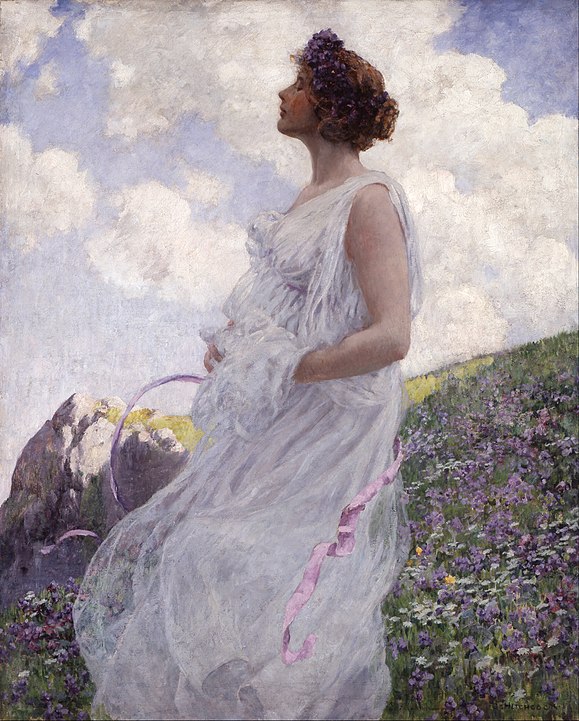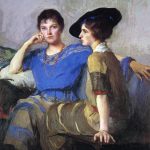
George Hitchcock, born on September 28, 1850, in Providence, Rhode Island, USA, was an American painter who, after abandoning a career in law, carved out a significant niche for himself in the European art world of the late 19th and early 20th centuries. His journey from a legal profession to the pursuit of art is a testament to the transformative power of passion and dedication. Hitchcock’s work is celebrated for its vibrant portrayal of floral landscapes, religious themes, and Dutch rural life, encapsulating a blend of impressionistic light and color with a symbolic and often mystical undertone.

Hitchcock’s transition to art began with his studies at the Royal Academy of Art in Munich, followed by further education in Paris. However, it was the Netherlands, with its unique quality of light and picturesque landscapes, that captured Hitchcock’s imagination and became his home for much of his life. Settling in the village of Egmond, Hitchcock was enchanted by the tulip fields, the North Sea coast, and the local customs, which became recurrent motifs in his paintings.
His style, characterized by a luminous palette and a tender, often idealized depiction of rural scenes, resonated with both Symbolist and Impressionist sensibilities. Hitchcock’s paintings of tulip fields, in particular, with their vibrant hues and dynamic compositions, showcase his ability to capture the essence of the Dutch landscape in a way that was both visually striking and deeply evocative. These works not only reflect his technical skill but also his capacity to infuse landscapes with a sense of spiritual transcendence.

Beyond his landscapes, Hitchcock’s work often explored religious themes, presenting them with a modern sensibility that bridged traditional iconography with contemporary Symbolism. His depiction of religious figures and narratives, set against the backdrop of Dutch nature and life, imbued these subjects with a new relevance and accessibility, appealing to a wide audience across Europe and America.
An advocate for American artists abroad, Hitchcock played a crucial role in establishing the Art Summer School in Egmond, which attracted students from across the globe, eager to learn from the master of color and light. His influence extended beyond his own canvases, as he mentored a generation of artists, imparting his vision of art as a medium of emotional expression and visual delight.

George Hitchcock’s contributions to art were recognized with numerous awards and honors, including a Chevalier of the Legion of Honor by the French government, acknowledging his impact on the international art scene. Despite his success in Europe, Hitchcock maintained strong ties to the United States, exhibiting his work and contributing to the American art community.
Hitchcock’s later years saw a continuation of his exploration of light and color, though his work received less attention as the art world’s focus shifted towards Modernism and abstraction. He passed away on August 2, 1913, in Marken, Netherlands, leaving behind a legacy that, while perhaps overshadowed by the avant-garde movements of the early 20th century, continues to be appreciated for its beauty, technical prowess, and emotive power.

Today, George Hitchcock is remembered as an artist who bridged continents and cultures, blending the American spirit of innovation with European artistic traditions. His paintings, a celebration of nature’s beauty and the human spirit’s transcendence, stand as enduring symbols of the universal language of art.






